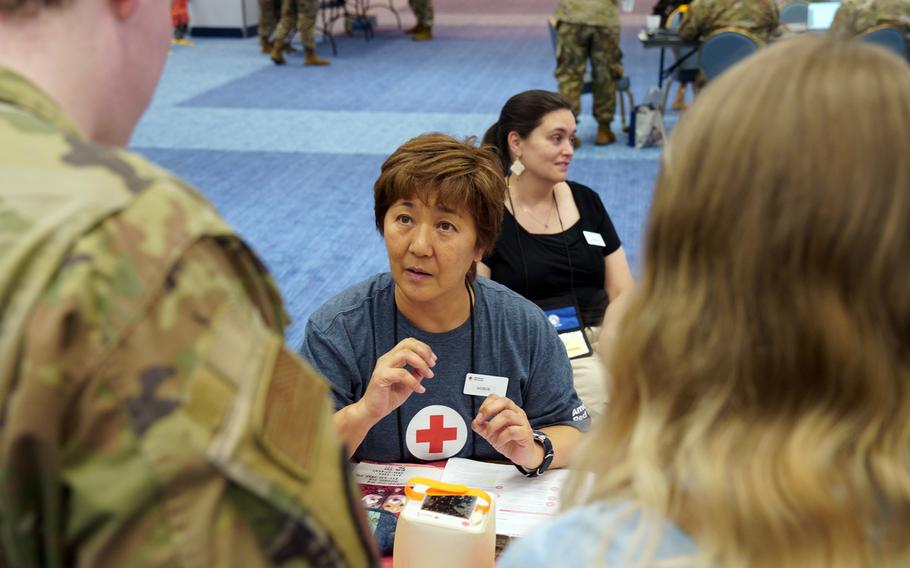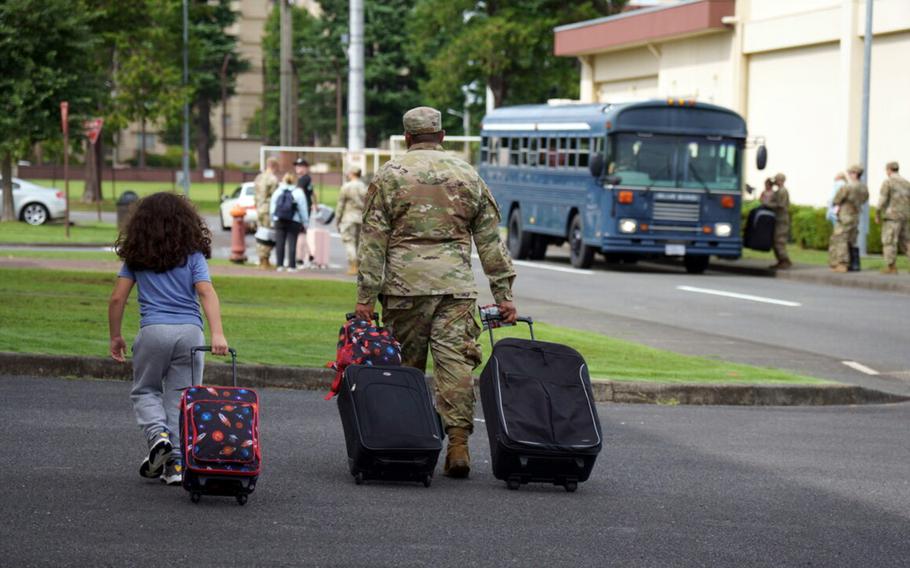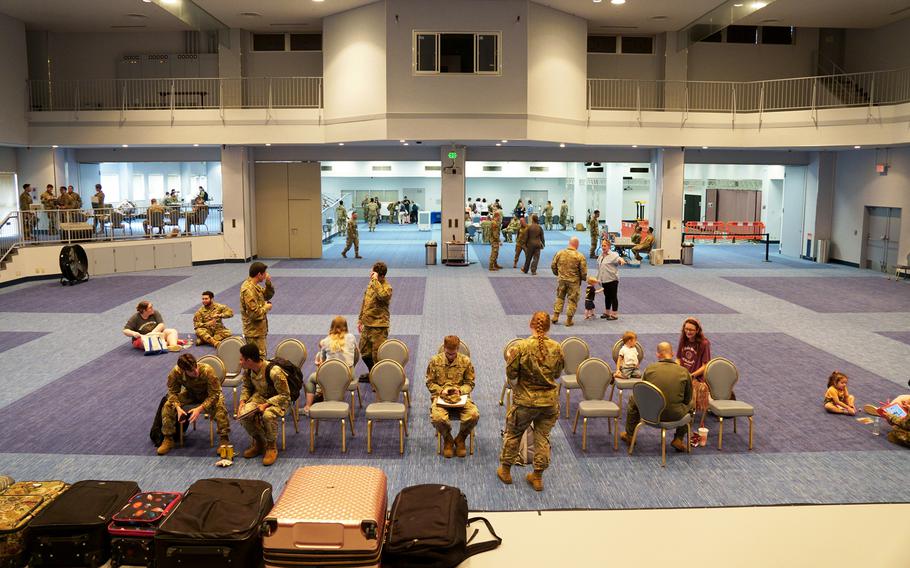
Service members and their families take part in an evacuation exercise at Yokota Air Base, Japan, Thursday, Sept. 7, 2023. (Akifumi Ishikawa/Stars and Stripes)
YOKOTA AIR BASE, Japan — Air Force spouse Stephanie Saylor volunteered to take part in a two-day evacuation drill recently for families and other noncombatants at this airlift hub in western Tokyo.
Saylor, of Poquoson, Va., is new to Japan.
“I've never lived on an island, and there are some potential earthquakes and volcanoes … I just wanted to know what would happen if we did need to evacuate,” she told Stars and Stripes on the first day of the exercise Thursday.
“I wanted to have more information so that, hopefully, I can better prepare our family for the possibility, which hopefully is not really a need,” she said.
The exercise tests Yokota’s plan to evacuate some of its people from harm’s way, be it an earthquake, volcanic eruption or a conflict with another country, Maj. Jazmine Hood, emergency evacuation program manager for the drill, told Stars and Stripes on Friday.

Service members and their family members take part in an evacuation exercise at Yokota Air Base, Japan, Thursday, Sept. 7, 2023. (Akifumi Ishikawa/Stars and Stripes)
Yokota evacuated some of its people after the March 11, 2011, earthquake and tsunami in northeastern Japan that crippled a nuclear power plant and released radiation into the atmosphere.
The base became a transportation hub for thousands of military dependents who returned to the United States, and the primary logistical hub for Operation Tomodachi, the U.S. humanitarian assistance effort after the disaster.
“So, we are fortunate in the sense that some of our leadership was here for the earthquake in 2011 and their families actually evacuated,” Capt. Mark Moore, director of the evacuation control center, said Friday. “So, it is very near and dear to our leaderships’ hearts; the wing here takes it very seriously.”
The 79 volunteers role-played as evacuees; another 60 people set up and ran the evacuation center. The Yujo Community Center served as the processing center where the volunteers went through the steps of providing correct documentation and acquiring financial, medical and spiritual support.
David Garrison, regional program manager for the American Red Cross, manned a Red Cross booth during the drill. He helped with disaster relief during the 2011 earthquake and tsunami.

Service members and their families take part in an evacuation exercise at Yokota Air Base, Japan, Thursday, Sept. 7, 2023. (Akifumi Ishikawa/Stars and Stripes)
“I think if people had been a little bit more prepared, things would have gone a little smoother,” he said Thursday. “There were so many people that weren't prepared. It could happen here, and it is likely it is going to happen again.”
Aki Iwata, a veterinarian at Yokota, was also present during the 2011 disaster that killed tens of thousands of Japanese people. At the drill, she reminded people to make pets part of their evacuation plan.
Pet owners should ensure their pets’ rabies shots and health certificates are up to date and have a noncombatant emergency evacuation card ready for the animals, she said. Printing services may be disabled during a disaster.
“No one wants to leave a pet, they are a part of the family,” Iwata said.
Yokota plans to hold the drill every year, according to Hood.
“We really want military members to understand that this impacts not only them but their families,” she said. “Thank goodness we have leadership support to actually get us to a place where we can say that Yokota is ready.”